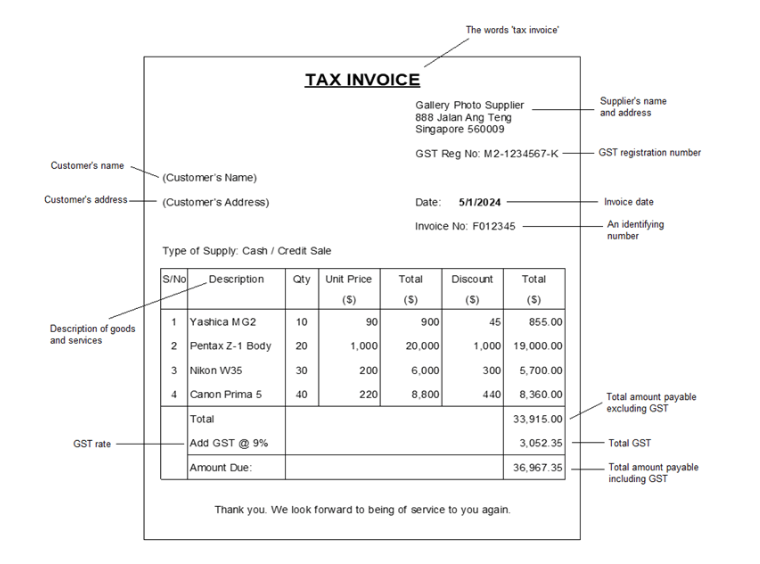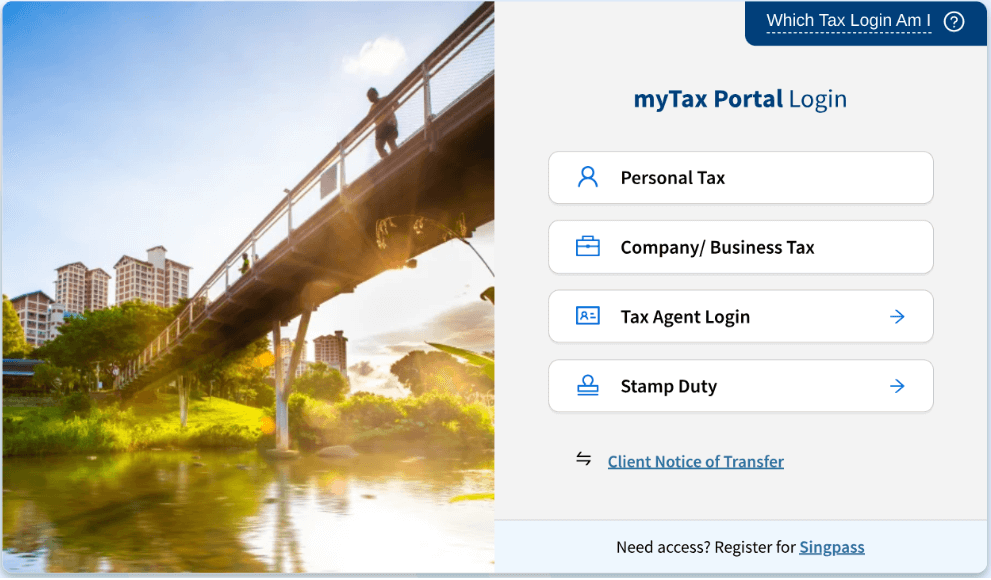Most Singaporeans are familiar with the term GST (Goods and Services Tax). GST is a consumption based tax levied on the supply of goods, services and the import of goods. As a business owner, it is important to know what GST is and how it applies to your business:
Good and Services Tax Definition
GST is a consumption tax levied on the sale of goods and services. It is collected by businesses on behalf of the government and is ultimately borne by consumers. The GST rate in Singapore currently stands at 9%, though certain goods and services may have GST exemptions.
These exemptions mostly apply to financial services, the supply of digital payment tokens, the selling and leasing of residential property and the import or local supply of precious metals. Exported goods and international services are zero-rated.
Due to the ageing population, GST was raised from 8% to 9% in 2024.
How GST Works

Businesses that are GST-registered must charge GST on their taxable supplies. This tax is collected from customers and later remitted to the Inland Revenue Authority of Singapore (IRAS).
GST-registered businesses can also claim GST for business purchases. These claims fall under Input Tax Credit (ITC), allowing businesses to offset the GST they paid for.
This means that GST-registered businesses only need to remit the difference between the GST collected from their customers (output tax) and the GST paid on their own business expenses (input tax).
GST Registration
There are two types of GST registration; compulsory and voluntary. It is compulsory for businesses with a taxable turnover of $1million or more to register for GST. Voluntary GST registration is also available for businesses that do not meet the threshold.
These businesses can then reap the benefits of GST registration including:
Credibility: A GST registered company will gain more trust and credibility. It shows that the business adheres to tax regulations. This can enhance reputation especially when dealing with larger clients or government contracts.
Input Tax Credit (ITC): A GST registered company can maximise their ITC claims. This allows businesses to recover the GST paid on business expenses, reducing overall tax liability.
Compliance: Complying with government laws are essential. By staying compliant, you protect your business from potential legal risks, creating a trustworthy foundation. Failure to comply will result in penalties and fines.
Global Opportunities: GST registration is mandatory in many countries, especially for international trade. GST registered companies can easily break into foreign markets, reducing administrative hurdles while opening up global opportunities.
Encourage Savings: Businesses can effectively reduce the cost of supplies by claiming ITC. This means you can save money on materials and supplies, translating to lower expenses.

When Should a Business Register for GST?
To determine if your business needs to charge GST output tax, you must first check whether GST registration is required. In Singapore, businesses must register for GST if:
- Their taxable turnover exceeds S$1 million in the past 12 months, or
- They expected taxable turnover to exceed S$1 million in the next 12 months.
If your business meets either of these conditions, you are required to register for GST and begin charging output tax on taxable supplies.
Read more about compulsory GST registration: What is compulsory registration under GST in Singapore?
However, even if you do not meet the threshold, voluntary GST registration is an option. Voluntary registration may benefit businesses that frequently incur GST on purchases, as it allows input tax claims.
Read more about voluntary GST registration: What is voluntary registration under gst?
Is your business not registered for GST yet? Do not worry! Help is just a call away. Contact us at (65) 6932 5055, and we will assist you with your GST registration in no time.
Read more about why GST registration matters: What are the benefits of GST Registration in Singapore?
Types of GST Schemes for Businesses
Singapore offers several GST schemes that can affect output tax obligations. These schemes are designed to simplify tax processes and ease cash flow.
This scheme is suitable for businesses that import goods for export. Under MES, you do not pay GST on goods imported into Singapore if they are meant for export. This reduces the need to handle large output tax payments upfront.
Businesses that cater to tourists can benefit from the TRS. It allows GST refunds for tourists purchasing goods in Singapore. If your business participates in TRS, you still charge output tax but facilitate refunds for eligible customers.
IGDS helps businesses defer GST on imports until the filing of their GST return. This scheme improves cash flow by postponing the payment of import GST.
By using these schemes, businesses can better manage cash flow while ensuring compliance with GST output tax regulations.
Understanding GST Invoice

A GST invoice is a legal document that must be issued when a business supplies taxable goods or services. The invoice should clearly display the GST number, GST rate and amount of tax charged (refer to the image above).
Invoices, both given and received, must be kept for at least 5 years. They do not have to be submitted with your GST returns. A tax invoice must also be issued within 30 days from time of supply.
A tax invoice does not need to be issued for zero-rated supplies, exempt supplies and deemed supplies or to a non-GST registered customer. Ensuring accurate GST bill format is crucial for compliance.
Filing GST Returns

GST returns or GST F5 are usually submitted on a quarterly basis. They must be filed based on the given time period by the IRAS. This includes reporting your output tax (GST collected from customers) and input tax (GST paid to suppliers).
The deadline for GST filing is usually one month after the end of the accounting period. Late submissions may incur GST penalties. The payment will be processed online via GIRO through the myTax Portal.
What Is Output Tax and Input Tax?
Output Tax: Output tax is the GST you charge and collect from customers – it is the tax you impose on your product. For example, if your business sells a product for $100 with a GST rate of 9%, you would charge the customer $109 with an output tax of $9.
This output tax will then be paid to the IRAS to support spending in public sectors.
Input Tax: Input tax is the GST you pay when you buy goods or services for your business. This includes GST paid on raw materials, utilities, rental or professional services to operate your business. You can then claim ITC on these expenses.
Claiming GST Refund
It is important to familiarise yourself with the conditions for claiming a refund. This includes meeting the requirements set by the IRA. For starters, you must ensure your goods and services are supplied to or imported by you.
These goods and services must only be used for the purpose of your business. Non-business activities include:
- Activities within philanthropy, religion, politics, patriotic or public domain.
- Activities without commercial reason.
- Activities that are private or personal.
Local purchases must also be supported by valid tax invoices addressed to you.
Becoming a GST Registered Company GST registration does not have to be complex. Cut through the intricacy with PLCO and find out how you can simplify the process of becoming a registered business. Contact us to find out more!

